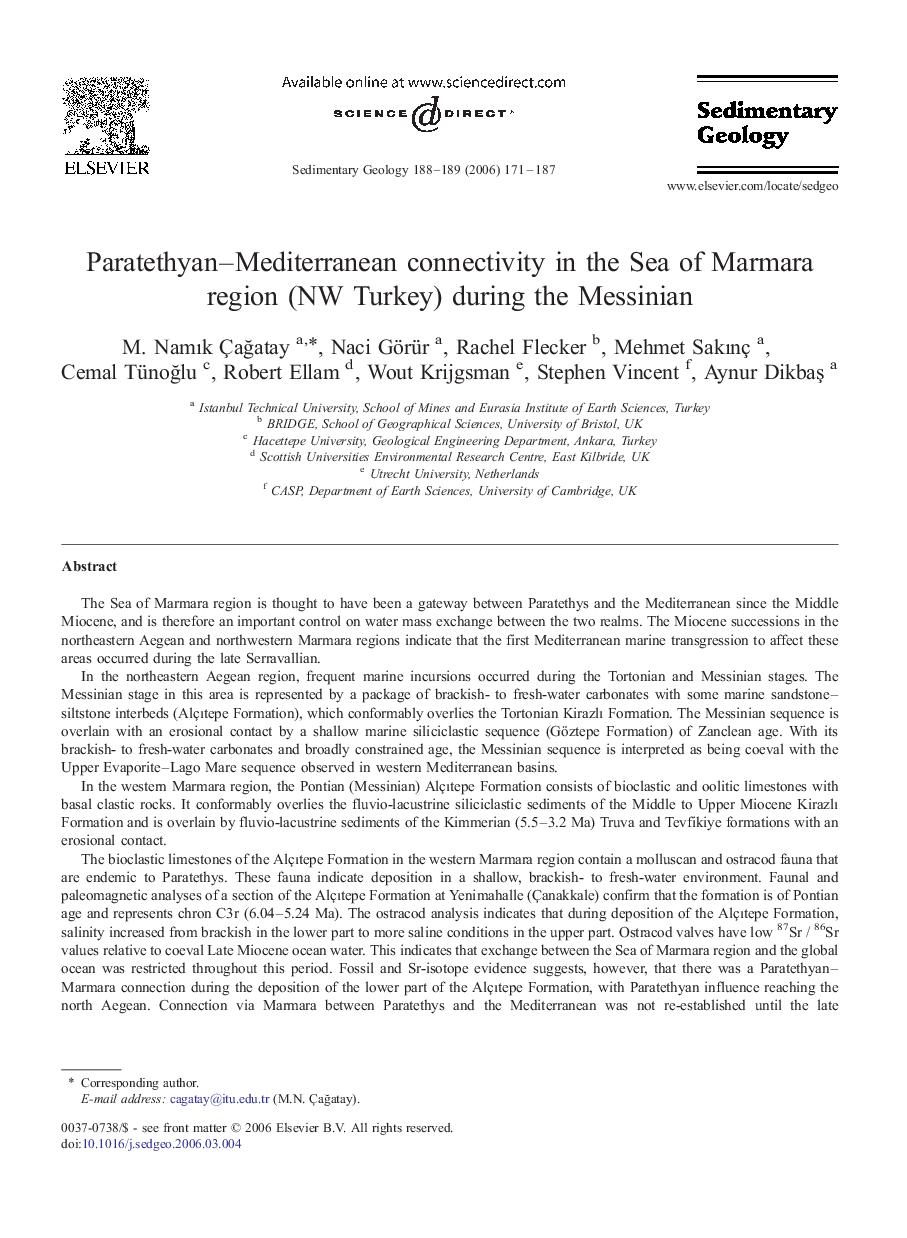| کد مقاله | کد نشریه | سال انتشار | مقاله انگلیسی | نسخه تمام متن |
|---|---|---|---|---|
| 4691067 | 1636184 | 2006 | 17 صفحه PDF | دانلود رایگان |

The Sea of Marmara region is thought to have been a gateway between Paratethys and the Mediterranean since the Middle Miocene, and is therefore an important control on water mass exchange between the two realms. The Miocene successions in the northeastern Aegean and northwestern Marmara regions indicate that the first Mediterranean marine transgression to affect these areas occurred during the late Serravallian.In the northeastern Aegean region, frequent marine incursions occurred during the Tortonian and Messinian stages. The Messinian stage in this area is represented by a package of brackish- to fresh-water carbonates with some marine sandstone–siltstone interbeds (Alçıtepe Formation), which conformably overlies the Tortonian Kirazlı Formation. The Messinian sequence is overlain with an erosional contact by a shallow marine siliciclastic sequence (Göztepe Formation) of Zanclean age. With its brackish- to fresh-water carbonates and broadly constrained age, the Messinian sequence is interpreted as being coeval with the Upper Evaporite–Lago Mare sequence observed in western Mediterranean basins.In the western Marmara region, the Pontian (Messinian) Alçıtepe Formation consists of bioclastic and oolitic limestones with basal clastic rocks. It conformably overlies the fluvio-lacustrine siliciclastic sediments of the Middle to Upper Miocene Kirazlı Formation and is overlain by fluvio-lacustrine sediments of the Kimmerian (5.5–3.2 Ma) Truva and Tevfikiye formations with an erosional contact.The bioclastic limestones of the Alçıtepe Formation in the western Marmara region contain a molluscan and ostracod fauna that are endemic to Paratethys. These fauna indicate deposition in a shallow, brackish- to fresh-water environment. Faunal and paleomagnetic analyses of a section of the Alçıtepe Formation at Yenimahalle (Çanakkale) confirm that the formation is of Pontian age and represents chron C3r (6.04–5.24 Ma). The ostracod analysis indicates that during deposition of the Alçıtepe Formation, salinity increased from brackish in the lower part to more saline conditions in the upper part. Ostracod valves have low 87Sr / 86Sr values relative to coeval Late Miocene ocean water. This indicates that exchange between the Sea of Marmara region and the global ocean was restricted throughout this period. Fossil and Sr-isotope evidence suggests, however, that there was a Paratethyan–Marmara connection during the deposition of the lower part of the Alçıtepe Formation, with Paratethyan influence reaching the north Aegean. Connection via Marmara between Paratethys and the Mediterranean was not re-established until the late Aktchagylian (Late Pliocene). The re-connection was caused by both increased activity on the North Anatolian Fault and global sea level rise.
Journal: Sedimentary Geology - Volumes 188–189, 15 June 2006, Pages 171–187